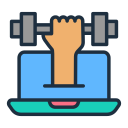Designing Fitness Plans for Specific Health Conditions
Start Smart: Understanding Your Condition and Exercise Safety
A quick chat with your clinician can unlock crucial details: medication timing, red flags, and recommended heart-rate zones. When Tom started training for hypertension, his doctor suggested shorter intervals and mindful breathing. Share your condition below, and we’ll help you list smart questions for your next appointment.
Asthma, arthritis, diabetes, or long-COVID—each condition has triggers worth mapping. Cooler air might aggravate bronchospasm; high-impact moves may irritate joints; fasted training can destabilize glucose. Tell us what flares your symptoms, and we’ll help brainstorm adjustments that keep you moving confidently.
Create a simple traffic-light checklist. Green means steady breathing and manageable effort; yellow brings warning signs like unusual dizziness; red means stop immediately. Emma, managing Type 2 diabetes, taped her checklist near the treadmill—she says it kept workouts calm, focused, and genuinely enjoyable.

Lower-intensity intervals, extended warm-ups, and gradual cool-downs can ease cardiovascular strain. Tom shifted from intense hills to steady walking with gentle surges, and his blood pressure improved within months. Share your current cardio routine, and we’ll suggest simple adjustments to reduce spikes and stress.



Monitoring and Progression: Adjust Without Guesswork
Rate of Perceived Exertion and the talk test help you stay in safe zones without overthinking numbers. If you can speak full sentences, you’re likely in a manageable zone. Tell us your latest RPE during a walk, and we’ll help translate it into a weekly plan.
Monitoring and Progression: Adjust Without Guesswork
Diabetes benefits from pre- and post-workout glucose checks; asthma from noting triggers and rescue inhaler use; chronic pain from pain and stiffness logs. Emma learned brisk walks reduced her glucose spikes by evening. What metric will you track first? Post it, and we’ll cheer you on.
Recovery, Nutrition, and Stress: The Hidden Half of Every Plan
A small pre-workout snack can stabilize energy for diabetes; consistent hydration helps with blood pressure and headaches. Raj swears by a banana and water twenty minutes before walking. What pre-workout snack helps you feel steady? Share your go-to and inspire someone else’s routine.
Quality sleep supports hormone balance, pain modulation, and immune function. Create a wind-down ritual: dim lights, gentle stretches, and a no-scroll rule. Readers who tried it reported calmer mornings. Comment your current bedtime, and we’ll help you build a realistic, compassionate sleep upgrade.
Breathwork, sunlight walks, and brief journaling can lower sympathetic load—crucial for heart conditions and chronic pain. Tom began three-minute box-breathing before workouts and noticed smoother heart-rate recovery. Tell us one stress habit you’ll test this week; we’ll check in and celebrate your progress.


Emma’s Diabetes-Friendly Walking Protocol
Emma paired 15-minute post-meal walks with resistance bands three times weekly. She tracked glucose trends and kept a granola bar nearby. Two months later, her energy stabilized, and her confidence soared. Drop a supportive note for Emma, and tell us how you time your walks.

Raj’s Back-Pain Comeback
Raj replaced sit-ups with bird dogs, added daily hip hinges using a broomstick, and walked on softer trails. Pain logs guided his progress. He now plays catch with his son without fear. If back pain holds you back, comment “START,” and we’ll share our favorite gentle core sequence.
Tools, Routines, and Community: Making Consistency Easier
01
Use wearables for heart-rate alerts, medication reminders, or step goals tied to your recovery pace. Keep data simple and actionable. If you track anything, share your favorite metric, and we’ll suggest a small weekly target customized to your condition.
02
Anchor workouts to existing habits—after brushing teeth, after lunch, or during podcast time. Place shoes by the door and schedule short sessions first. Tell us your busiest day, and we’ll help you fit a ten-minute routine that still respects your symptoms.
03
Invite a friend with similar goals, join an online group, or check local condition-specific meetups. Accountability turns streaks into habits. Comment if you want a buddy; we’ll match readers by condition and schedule so you never train alone.
